a l a b r e v e


the official publication of the Alabama Music Educators Association August/September 2015 www.alabamamea.org
Back to School Issue
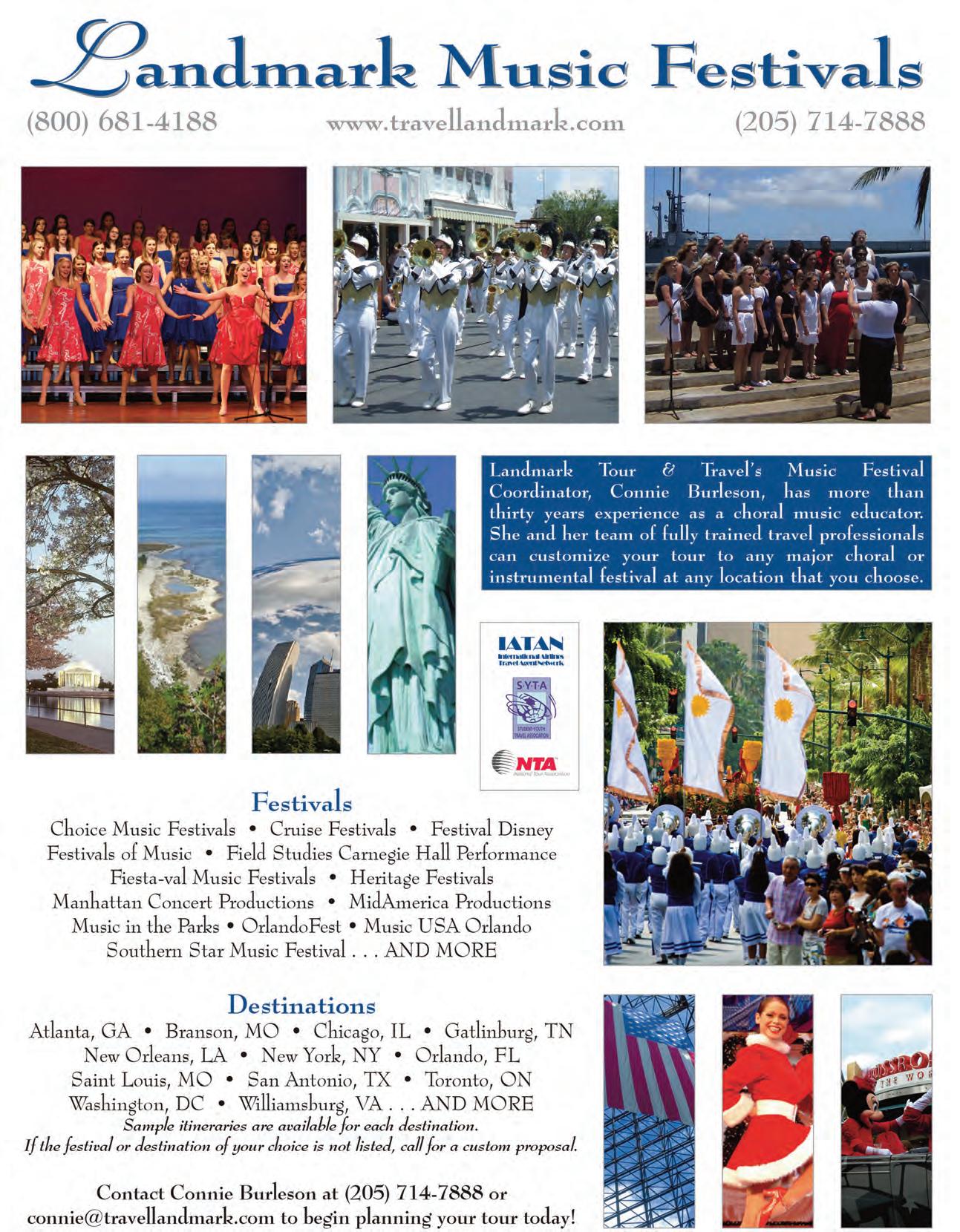


the official publication of the Alabama Music Educators Association

8AMEA Governing Board Directory
102016 Conference Quick Facts
15ABA Legislation
17Phi Beta Mu “Tips that Click”
20 Campus Connctions
26This is How We Do it Here... by DaLaine Chapman
28Battling Going Through the Motions in Band Rehearsal by Susana M. Lalana
30Schedule of Events
32FAME Essay: Why I Want To Be A Music Teacher by Morgan Green
342016 AMEA Conference Pre-Registration Form
36Choral Reviews by Diane Orlofsky
37AMEA Industry Members
Advertisers
Index
Features...
38When Helping Hurts... by Michael Raiber 40FAME Registration Form August/September 2015
American College of Musicians...............27 Arts Music Shop, Inc..................back
AU Bands..................................................12 AU Music Department..............................23 Gadsden Music Company.........................41 Group Travel Network..............................43 Huntingdon College Bands.......................22 Jacksonville State University....................19 John M. Long School of Music (Troy).......3 Landmark Tours..........................................2 NAfME/AMEA.........................................34 NAfME In-Service Conference..................7 Panama City Music Festival.......................9 UA Bands....................................................4 UAB Department of Music.......................42 UAB Marching Blazers ............................15 UNA Department of Music.......................24 University of South Alabama Bands.........33 University of South Alabama Music.........21 Yamaha......................................................11 6.....................President 9.....................Collegiate 10..........................HED 13.............................AVA 14...........................ABA 16...........................AOA 18..................Elem/Gen 18..........Past Presidents 20....................Registrar 25...........................Jazz Departments... ala breve 5
ala breve ala breve
cover
Greetings and welcome back!
When the tolling of the Denny Chimes mixes with the resonating chords from the Million Dollar Band and youthful voices of new students, it is easy to recognize the beginning of the school year is well under way in Tuscaloosa. If you are like me, the summer break has faded into a distant yet pleasant memory, and you are now immersed in setting goals, planning lessons, teaching students, and preparing for an exciting new year of music-making and learning.
AMEA. Members of the Governing Board worked for months planning an excellent year of professional growth and learning for you and your students, and I can’t wait to share some of it with you.
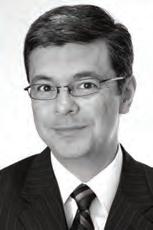
In June, the Governing Board met and welcomed our incoming board members and together we renewed our commitment to many of the initiatives we started in 2014. This year, we will attempt to complete the second phase of our strategic plan and ensure we pass as many milestones as possible. In essence, we will continue to connect with nationally recognized leaders, emphasize professional outreach, increase industry connections, fund special clinicians, and build our capacity for state-level advocacy by rebranding our organization and growing membership.
possible and needed to provide meaningful professional development for educators tasked with teaching music in the second decade of the 21st century. We are reaching out to the professional music community in a way that we’ve never attempted before by having the renowned professional brass quintet, The Boston Brass, headline our inservice conference. And we will try a few other experiments to inject more “professional” into the professional development we offer. As my colleague Skip Snead likes to say when good news is just around the corner, “stay tuned!
I am always amazed at how uplifting summertime can be. It truly reinvigorates my passion for teaching. For those of you who know me well, come mid-August, I begin to look forward to the first day of classes and overtly express the same excitement I felt when I was a schoolboy. However, this time, as I take stock of the summer and last year, I am feeling excited about what the future will bring and simultaneously, very proud about our past. I am amazed to count how much we accomplished as an Association, especially in just the last couple of months. This summer was extremely productive for the
To achieve a substantial increase in membership, we pledged to seek out those music teachers who left the AMEA, restore their faith in our association, and encourage their return. As an example of our commitment to this goal, the AMEA will implement a concerted membership drive from now through January, which will be led by former AMEA President (2008-2010) and current Treasurer/Registrar, Pat Stegall. He will have the help of Peter Daugherty from the NAfME office and assistance from volunteers throughout the state. We encourage you to take a moment and reach out to colleagues and let them know, the AMEA and NAfME are focused on meeting the needs of Alabama music teachers and their students. At the same time, we will seek out new teachers, whether new to the profession or new to our great state, and encourage them to join not just for the resources we can provide, but for the camaraderie and support. We need to stand together for music education in our schools and communicate a consistent message about the importance of music in the lives of our students. The old adage popularized by Helen Keller, “Alone we can do so little; together we can do so much” certainly rings true when it comes to advocating for music. So, we will continue to work at recruiting new members, retaining current members, and inviting former members to take a second look at our organization.


We will also continue to tinker with our inservice conference, so we learn what is
At the end of June, four members of our Governing Board and three of our Collegiates traveled to Washington, D.C. to participate in NAfME's National Leadership Assembly, Collegiate Advocacy Summit, and Hill Day 2015 activities. Some of the many highlights from the trip include visiting the offices of both of our US Senators and four State Representatives on Capitol Hill. We shared a simple, yet profound message of advocacy for music education and discussed the importance of maintaining music and the arts as core academic subjects in the Elementary and Secondary Education Act of 2015. By all accounts, our message was well received.


Also, in June, we learned that five Alabama students were selected for the All-National Honor Ensembles to perform at the NAfME National Conference (October 2528) in the Grand Ole Opry Housein Nashville, Tennessee! These outstanding students were nominated by their directors and will join other fine musicians from

6 August/September 2015
Carl Hancock AMEA President
The 2015 AMEA Hill Day Delegation posting after meeting with staffers from Senator Richard Shelby’s (R) Washington DC office. From left to right, Sara Womack (AMEA PastPresident, SD President-elect), Mai Yamane (Collegiate), Susan Smith (AMEA President-elect), Allison Glover (Collegiate); Carl Hancock (AMEA President), Madison Baldwin (Collegiate), Kelsey Manweiler (Senator Shelby Staff), and Hamilton Bloom (Senator Shelby Staff).
Members of the 2015 AMEA Hill Day Delegation with Alabama Congressman, Robert Aderholt (R-District IV, center). Pictured are Carl Hancock (AMEA President), Sara Womack, (AMEA Past President, SD President-elect), Madison Baldwin (Collegiate), and Allison Glover (Collegiate).
across the US to form the All-National Concert Band and Mixed Choir. Selected students include Carrie Ciecierski (Dothan High School, Steve McLendon, director), Liam Remley (Shades Valley High School, David Allinder, director), Hannah Love (Saraland High School, Christine Breland, director) and Ben Cooper and Devan Payne (Austin High School, John Cooper, director). I hope you will join me in congratulating these students and their directors.
Finally, here is a glimpse of some of the plans we are working on for 2015-2016 and goals we surpassed this summer.
President-elect, Susan Smith, is working on hosting our state’s first Alabama Music Education Advocacy Day in 2016.
The Ala Breve will continue to invite music educators from across the US to write original articles for our journal. To date, we have published 23 original articles in our journal since beginning the initiative.


Garry Taylor has helped increase Industry Membership in the AMEA to 22 members which is a 57% increase over figures from a year ago.
The FJH Music Company Inc. will sponsor the AMEA Reading Band and support a top-notch clinician, Brian Balmages, to direct the group at our state conference in January 2016.
The Governing Board passed a budget to extend the special clinician fund for the AVA, ABA, AOA, and Elementary/ General Music Division. Each group now has the opportunity to invite nationally recognized speakers to present at the 2016 In-Service Conference.
The Governing Board secured support from Jupiter Band Instruments to help bring the Boston Brass to headline the 2016 In-Service Conference.
Dr. Diane Orlofsky from Troy State University was appointed to serve as the 2015-2016 choral music reviewer for the Ala Breve.
Mr. David Raney of Sparkman High School was appointed to serve as the Alabama TI:ME Representative. The Technology Institute for Music Education, also known as TI:ME, has expressed an interest in partnering with the AMEA.
The AMEA website will be restructured, modernized, and rebuilt.

The Outstanding Young Music Teacher Award was officially renamed the Edward H. Cleino Outstanding Young Music Teacher Award in honor of Ed‘s numerous contributions to the AMEA.
This is only a snapshot of the excellent work your AMEA Officers and Governing Board members have been doing this summer and I am certain their columns will highlight the leadership they bring to Alabama. As you can tell, planning and preparations for the new year are well under way. As your President, I am looking forward to partnering with you to provide the best music education possible to students throughout Alabama. We are here to support you and I welcome your thoughts, ideas, and comments. I wish for you and your students a great new year.
Carl Hancock, President
ala breve 7
Ellis Ludwig-Leone of the San Fermi band with AMEA Leaders and Collegiates at the NAfME National Leadership Assembly in Tysons Corner, VA. San Fermi is the 2015 Stand for Music Award Winner and Ellis is the Alabama Symphony Orchestra’s Sound Investment Composer-inResidence. From left to right, Carl Hancock (AMEA President), Susan Smith (AMEA President-elect), Sara Womack (AMEA Past-President, SD President-elect), Ellisa Ludwig-Leone, Allison Glover (Collegiate), Mai Yamane (Collegiate), and Madison Baldwin (Collegiate).
President CarlHancock UniversityofAlabama Box870366 Tuscaloosa,AL35487 (205)348-6335
chancock@bama.ua.edu
President,ABA

MichealHolmes
MountainBrookJuniorHigh School
205OverbrookRd.
Birmingham,AL35213
(205)871-3516x8525
thetubaman@charter.net
PastPresident SaraWomack Greystone ElementarySchool 300VillageStreet Birmingham,AL5242 (205)439-3200

saratwomack@gmail.com
President-Elect
SusanSmith

SaintJamesSchool
6010VaughnRoad Montgomery,AL36116 ssmith@stjweb.org
ExecutiveDirector Editor, AlaBreve







GarryTaylor
1600ManorDr.NE

Cullman,AL35055
(256)636-2754
amea@bellsouth.net
RecordingSecretary
CarlaGallahan
President,AVA
CarlDavis
DecaturHighSchool






1011ProspectDrive
Decatur,AL35601
President,AOA SarahSchrader P.O.Box2221 Foley,AL36536 (334)728-2855 burkart_sarah@yahoo.com




Treasurer/Registrar PatStegall




AMEARegistration POBox3385
MuscleShoals,AL35661 pstegall@mscs.k12.al.us
212SmithHall
TroyUniversity
Troy,AL36082
(334)670-3502
cgallahan@troy.edu
President,AMEACollegiate

ThadWalker
UniversityofMontevallo
(205)636-0756
jwalker14@forum.montevallo.edu
(256)559-0407
carlbethemeryellen@gmail.com
IndustryRepresentative
BeckyLightfoot
ArtsMusicShop












3030EastBlvd.
Montgomery,AL36116
334/271-2787

beckyl@artsmusicshop.com
AMEACollegiateAdvisor






TedHoffman
UnivesityofMontevallo
Station6670
DavisMusicBuilding308
Montevallo,AL35115
(205)665-6668

ehoffman@montevallo.edu
GarryTaylor,Editor&AdvertisingManager 1600ManorDr.NE Cullman,AL35055 (256)636-2754





amea@bellsouth.net
President,HigherEducation
JamesZingara

UAB231HulseyCenter
Birmingham,AL35294
(205)934-7376
jzingara@uab.edu
President,Elem/Gen








CliffHuckabee
TheMontgomeryAcademy
LowerSchoolCampus
1550PerryHillRoad
Montgomery,AL36109 334-462-3790
cliffhuckabee@gmail.com
ADVERTISING©DEADLINES

Fall-August/September(BacktoSchool)issue:July15
Winter-October/November(Conference)issue:September15
Spring-February/March(All-State)issue:January15
Summer-May/June(DigitalOnly)issue:April15
Unlessotherwiseindicated,permissionisgrantedtoNAfMEmemberstoreprintarticlesforeducationalpurposes.Opinionsexpressedinthispublicationarenotnecessarily thoseofAMEAortheEditor.Allannouncements&submissionsaresubjecttoeditorialjudgement/revision.TheAlabamaMusicEducatorsAssociationisastateunitofNAfME: TheNationalAssociationforMusicEducation,avoluntary,nonprofitorganizationrepresentingallphasesofmusiceducationinschools,colleges,universities,andteacher-education institutions.ActiveNAfME/AMEAmembershipisopentoallpersonsengagedinmusicteachingorothermusiceducationwork.







AlaBreve ispublishedfourtimesayear(August,October,February&May)bytheAlabamaMusicEducatorsAssociation.Subscriptionformembersis$4.00peryear aspartofannualNAfME/AMEAdues.Subscriptionsfornon-membersis$15.00peryear.BulkratepostagepaidatDothan,AL.

8 August/September2013
AMEAGoverningBoard2015-2016
ala brevetheofficialpublicationoftheAlabamaMusicEducatorsAssociation b 5 w m
Hello Collegiate Members,
Thad Walker - President, AMEA Collegiate Division

I hope that you have been enjoying your summer and now find that you are well rested. While taking this relaxing break from school, I hope that you have all found ways in which you have bettered yourself as a future music educator. The Collegiate Board has been preparing for next school year’s two fantastic events that I really hope to see each and every one of you attend.
The AMEA Conference is one of NAfME’s greatest events each year and this year is no exception! The board has selected a wide variety of sessions that will contain extremely valuable information that will help us all in our future careers. Please make plans to attend one of the greatest opportunities to learn valuable information - specifically for college students - as well as meet some very fantastic educators. Keep your eyes and ears out for our pre-registration date. I also encourage you to seek out funding from your schools. This is something that they will love to help you with.

An event that will be coming up before AMEA Conference is the Collegiate Fall
Summit. This event is a one-day FREE event specifically for college students. Although smaller than AMEA,this event brings you closer to other students outside of your school that share the same passion that you do. There will be several sessions that we are excited to be a part of and hope that this will further your knowledge. We also hope that these sessions will take away some of the apprehensions that we as future educators may have.
The collegiate board and I cannot wait for this exciting year to start. If you have not joined the Facebook – Alabama NAfME Collegiate page, please do so. This page has all sorts of interesting information. Please feel free to contact me with your questions or concerns.

Thank you and I look forward to working with you this year!
Thad Walker President- Collegiate Division University of Montevallo
jwalke14@forum.montevallo.edu
(256)-636-0756

ala breve 9
INVITATIONAL PANAMA CITY BEACH MARDI GRAS PARADE... for Concert Band, Orchestra, Jazz Band & Choral Competitions INVITATIONAL PANAMA CITY BEACH MARDI GRAS PARADE... SPRING
Packages include Free Concerts, Free Fireworks Shows and Free Mardi Gras events for Parade participants. FEB. 5-6, 2016 Professionally run music events on a beautiful beach, with unique attractions and the coolest beach party and awards on the planet! Get the Most Fun in Florida at the Lowest Prices! www.panamacitybeachmusicfestival.com MAY 13-14
FESTIVALS
James Zingara - President, Higher Education Division
reports)can be found on the AMEA website: http://www.alabamamea.org/higher_ed/inde x.htm and will be in effect as we elect the positions of President-Elect and SecretaryTreasurer in January.
Dear HED Colleagues,
I hope that you have had a relaxing summer break and are returning to the school year with the batteries fully charged. I would like to take this opportunity to thank my HED Division colleagues Dr. Becky Halliday (PresidentElect) from the University of Montevallo and Mildred Lanier (Secretary – Treasurer) of Jefferson State Community College for their hard work and contributions over the past several months. During this time, we have selected sessions for the 2016 AMEA Conference (which will be announced in the October Ala Breve) as well as enacted a new set of HED By-Laws, which are mainly concerned with the officer election process as well as clarifying the duties of the individual offices. These by-laws (as well as our division
For the 2015 Conference, we added two new events, namely the HED Panel Discussion and the HED Student Ensemble Showcase. These events generated a lot of positive feedback and I am happy to announce that both sessions will return in 2016. This year’s panel is entitled The Breakdown Between the Higher Ed Classroom and First Year Teacher Experiences and will be concerned with the perceived “knowledge gap” between graduating student expectations and actual performance in initial positions. The idea here is to establish communication between Higher Education and fledgling music educators in the field in order to better prepare students for the challenges that they will face in their first jobs.
The HED Student Ensemble Showcase provides anexcellent opportunity for college and university chamber groups to perform at
the state conference. Last year, the recital featured 60 student performers from 5 different universities who performed to over 100 people and we hope to reproduce the success of this event again in 2016. If you would like to have your group perform, please send an e-mail including your proposed program information (title, composer/arranger and movement titles) and personnel list to jzingara@uab.edu by November 1st, 2015 Although ensembles from 2015 are encouraged to apply, the emphasis of this year’s recital will be to showcase groups that are new to the event.There will be a small reception following this year’s recital for faculty and students.
During this past year, I have had many opportunities to meet and work with our HED colleagues from around the state and am looking forward to many more in this coming year. Please do not hesitate to write me if you have any questions or ideas concerning the future activities of the Higher Ed Division. In the meantime, please accept my best wishes for a rewarding and successful school year!
2016 AMEA In-Service Conference Quick

Facts
(The October issue of Ala Breve will provide complete details of the conference, including the schedule, performing groups, clinicians, etc. This quick guide is provided in advance for your convenience.)
Dates: January 21-23, 2016
Location: Renaissance Montgomery Hotel at the Convention Center and the Embassy Suites Hotel (across the street)
Special Performance and Clinic by the Boston Brass
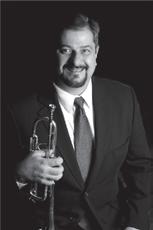
Two dynamic keynote speakers - Chris Woodside and Dr. Tim Lautzenheiser
Lobby performance applications are due by October 1. See the AMEA website for the form.
FAME applications are due by January 8. See the AMEA website for the form.
Pre-register on-line (www.alabamamea.org)
Or, print and mail the pre-registration form on page 33 of this issue.
Reserve a room at the conference rate: Click on the link on the main page of the AMEA website. Or, call toll free: 800-266-9432 (Renaissance) 334-269-5055 (Embassy Suites)
10 August/September 2015


Beginning, Middle, End.
Ecclesiastes 7:8 indicates that, “Better is the end of a thing than the beginning thereof…”. I am grateful to begin the second half of my term as AVA president. As we begin the school year, we are experiencing all of the aspects of beginning, middle and end. Pat Blackwell, after serving the AVA board as the executive secretary for seven years, retired, ending her seven year term, giving notice at the beginning of April that her last day was would be June 30th Rebekah Stevens of Northport began working before her official first day on July 1st. This is a one-year interim position and we will repost the job for applicants in January, 2016. Rebekah also assumed the responsibilities of webmaster. We encourage you to be patient as we are dealing with a huge handicap. Both positions - executive secretary and webmaster - have a huge work load in the late spring and early part of the summer. Rebekah is doing - and is going to do - a great job this year. My prediction is that she will be a great customer service asset to our organization. You certainly will want to attend the fall workshop and meet her.
Communicating with and within our organization is an essential. To more effectively communicate and to maintain a trouble free emailing service, we have moved all of our AVA board email accounts to Gmail. Now when AVA board members rotate on and off the board, email addresses will stay the same even though the people change. The permanent addresses of the AVA Board positions are:
PresidentOfAva@gmail.com - Carl Davis
PresidentElectAva@gmail.com - Ginny Coleman
VicePresidentAva@gmail.com - Jody Powell
RecSecAva@gmail.com - Jane Powell
ExecSecAva@gmail.com - Rebekah Stevens
District1Ava@gmail.com - Michelle Reburn
District2Ava@gmail.com - Hilen Powell
District3Ava@gmail.com - Ginny Hughes
District4Ava@gmail.com - Cathy Spence
District5Ava@gmail.com - Meg Jones
District6Ava@gmail.com - Jerry Cunningham
District7Ava@gmail.com - Daniel Massey
Each of these new gmail accounts provides each board member 15 GB of free storage on google drive to maintain AVA documents. This will allow smooth transfer of documents to the next person who takes a board position. After Fall Workshop, your AVA board will only use the above addresses for communication as the @alavocal.org addresses will be closed.
Maintaining a current up-to-date database of our membership facilitates our ability to communicate. Last year, I indicated that one of my goals was to move our organization into the 21st century in the areas of communication and registering for events. I think that we are on track for both of those. This past year we provided information by which you could enter your biographical data on the AVA website as practice. This year, to be able to register for any AVA event, after Fall Workshop, you will have to have entered your contact information on the AVA website. This will be a yearly requirement and will afford us an up-to-date database for communication. Visit the AVA website and complete the following steps:


1. Visit www.AlaVocal.org.
2. Click the “Director Portal” 3. Enter the Case Sensitive Username and Password (all lower case) Username: pat Password: blackwell 4. Under the “Membership” Heading, Click the “Member Registration” button. 5. Enter you data. You will receive an email (at all addresses provided - home and school) indicating the information submitted. This is your proof of registration. This endeavor should yield our organization a current yearto-year reliable database of information. I also project that we will collect registration information for one event this year via our website. More instruction will come later concerning collecting registration data online instead of mailing or faxing paperwork.
The 2015AVA Fall Workshop will be held at First Baptist Church, 305 S Perry St, Montgomery, AL, on Friday, September 11th. Again this year the fall workshop is a
one-day event. Dr. Debra Spurgeon will present four sessions: 1. Improving the sound of your school, community, and church choir: Targeting sopranos and altos; 2. Tried and true and overlooked: Recommended online repertoire and resources for the middle and high school choir. 3. Arranging your choir for success: Standing formations, spacing, and recent research on choral acoustics; 4. Reading Session. The twenty titles will be bound in octavo size and are included as part of your registration cost. We will also have 3 mini-sessions. These sessions will address: All State Music and Auditions(Carl Davis); Honor Choir and Screening(Ginny Coleman) ; Physical Expressivity in Performance (Dr. Marvin Latimer); If you have taught one – three years, please register for the free New Teacher Luncheon. Cathy Spence and Dr. Debra Spurgeon will present some relevant information at that luncheon.
Remember to join or renew your NAfME membership before the fall workshop. I wish you all the best as you begin your new school year.

ala breve 13
Carl Davis- President, Alabama Vocal Association
The Process Continues
As educators we never really end a school year and start over as most think we do. We just continue, with hopefully a few breaks along the way, to prepare for what is next. There is always another rehearsal, performance, fund-raiser, booster meeting, trip, or field to line off. I know this is true in the band director profession. We are researching MPA performance music while planning a marching band show. We are recruiting for the future as we are preparing for our final concert of the year. And one of the things that we do that is most impressive is we are helping each other all along the way. Working each other’s band camps, conducting instrument tryouts for a colleague’s next beginner band, visiting rehearsals to assist with contest preparation, sharing advice on music that is advisable or not so advisable to play. And that’s just the tip of the iceberg.

I see the same dedication and camaraderie from band students. If the band room is open, they will come. It is their “Clubhouse.” Hanging out with fellow band members, meeting after the game at Waffle House, throwing a Frisbee during water breaks, or crashing the flute section’s pool party is what keeps them coming back. Observing the friendships that develop, the musical growth, and the personal growth of our students is what keeps us coming back. It’s going to be another great year of band. ABA Summer Conference 2015 is in the
books. I am positive that if you attended you were not disappointed. We had outstanding clinics presented by Keith Anderson, Pat Stegall, Mark Foster and Sallie Vines White, and Greg Gumina (Southwind Drum Corps). What great attendance we had for the “Social Hour”/Shrimp Boil -approximately 140 directors and family members attended. Having Betty Bates as our featured “Old Fogie” speaker had much to do with the huge crowd. Betty is an amazing person. Please plan to attend next year. I promise that we will be fully prepared for a large crowd and we will get you fed more efficiently. Thank you to AWB Apparel, Southern Performances, Art’s Music Shop, Demoulin Uniforms, Sound Choices Recording, Super Holiday Tours, and Mouchette Enterprises for serving as sponsors of the “Social Hour.” Hopefully, you and your family also got in some much needed beach time as well. We will return to Hampton Inn-Orange Beach in June of 2016.

I want to thank and congratulate you on selecting such fine representatives from your districts to serve on the ABA Board. We had a very productive board meeting.It is a privilegeto be surrounded by such talented individuals.

Several committees are working on assigned projects, such as updating our by-laws, adjudicator certification process, and list of approved adjudicators. President-Elect Doug Farris has already proven to be an invaluable asset to your organization and especially to me. As outlined in our By-Laws, Doug is Chair of the Music Selection Committee. We have representation from throughout the state on this committee. They met for several hours and will be adding a number of new compositions to the Cumulative List. New music added this summer will be noted as such on the list. Executive Secretary Harry McAfee received a well-deserved positive review from the board as well. Thanks to Harry for a job well done.
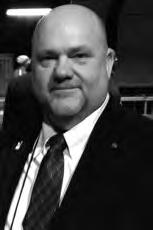
As a member of AMEA/ABA,you also have responsibilities. Return all dues, fees, registrations,and respond to all correspondence in a timely manner. Renew your NAfME membership now if you have not done so. Please do not wait until the AMEA In-Service in January to renew as this creates delays in the onsite registration and pre-registration pick-up process. Check the AMEA/ABA website regularly. You will find needed forms, AllState Band audition requirements and etudes, Cumulative Music list, ABA Directory, and other useful and needed information. Check the abafest.com site weekly for announcements and calendar updates. Your ABA state officers and district officers will be using this site to keep you informed as well as have you register for events such as All-State and MPA. With the guidance of David Raney we are continuing to develop and expand this site.




We will have three pieces of new legislation (included in this issue) to consider at our business meeting in January at the AMEA Conference. Conferenceregistration and lodging reservations are available now. Visit the AMEA websiteto access this information. Pre-register today and save. We have a great line-up of per-forming ensembles and clinics/sessions representing ABA for this conference.
Alabama has been well represented for the past several years at the annual Midwest Clinic in Chicago. We have had a band perform, as well as several of our ABA
14 August/September 2015
Micheal Holmes - President, Alabama Bandmasters Association
Social hour at the ABA Summer Conference
Southwind Clinic at the ABA Summer Conference
Pat Stegall presents a clinic at the ABA Summer Conference
members present clinics, rehearsal labs, serve on panel discussions,etc. This year the Pizitz Middle School Band, under the direction of Kim Bain and Leah Seng,will perform on Wednesday, December 16, 2015, at 10:45 A.M. Please make your reservation for Tuesday,and let’s have a strong ABA showing in support of our colleagues and their students.

I wish you success as you continue to inspire your students to reach the goals that have been set. And DON’T FORGET THE SUNSCREEN.
Alabama Bandmasters Proposed Legislation 2016-1
Submitted by Clay Sloan
Article XVI, Section 2-1
Eliminate the final two sentences that state:
“A band may be allowed to drop a maximum of two classifications and shall have to climb one classification per year until reaching its regular classification. Requests to reclassify should be the exception to the rule.”
Add the following:
Any band that has not received an overall rating of superior in the previous two years
of Music Performance Assessment may perform in any classification the director chooses. (High School bands must remain in the High School classifications). Upon receiving an overall rating of superior in a lower classification, a band will be required to climb one classification until reaching the classification that is dictated by school enrollment.
Alabama Bandmasters Proposed Legislation 2016-2
Submitted by Mark Foster, Jazz Chair Jazz Fee Structure
2. Article XIX. Fee Schedule
Currently reads:
All-State Jazz Band audition fee: $15.00 per student
$20.00 school fee
$40.00 participation fee for students who are selected to participate in one of the All-State Jazz Bands
Change this section to read:
All-State Jazz Band audition fee: $15.00 per student
$20.00 school fee
$50.00 participation fee for students who are selected to participate in one of the All-State Jazz Bands
Alabama Bandmasters Proposed Legislation 2016-3
Submitted by Dr. Mark Foster
By-laws currently read:
Article XVI
Section 7. State Solo and Ensemble Festival j. No “approved lists” shall be required. NAFME’s “Ensemble Music for Wind and Percussion Instruments” and the University of Texas “Prescribed Music” catalogues may be helpful in selecting material. It shall be the responsibility of each director to guide his performers so that they make wise choices of literature. Adjudicators will have the right to lower ratings for poor choices.
Change this to read:
j. All performance music for all events except for jazz ensemble events must be selected from the ABA Solo and Ensemble Suggested Music List. It shall be the responsibility of each director to guide her/his performers to make wise choices of literature. Adjudicators have the right to lower ratings for poor choices of literature. It is the intent of the author of this legislation that it take effect during the school year 2016-2017.
ala breve 15
As the new school year starts, we are all gearing up for the excitement that is sure to come. Here’s a quote to remind us how important our profession is.
“The back-to basics curricula, while it has merit, ignores the most urgent void in our present system- absence of self-discipline. The arts, inspiring— indeed requiring –self-discipline, may be more basic to our nation’s survival than traditional courses.”
Paul Harvey
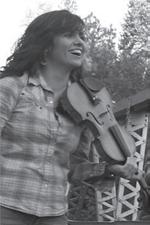
Wow! How amazing is it to be reminded that our classes are not just EXTRA, but essential to the survival or our nation. I hope this year you remember how important our roles are as music educators. Be inspired to be the best you can be so those essential character traits needed to keep our country great will be instilled in your students.
As this new school year begins, the AOA executive board is busily working to make this year of festivals and conferences amazing for our students and teachers. We are working on All State auditions, nailing down speakers for our AMEA in-service conference, and working out details for the first ever AOA Music Performance Assessment Festival.
All State Excerpts will be posted on our website www.alabamaorchestraassociation.org on August 10, 2015. All State Conductors and music will be as follows: Festival Orchestra: Peter Bay will conduct the

Brahms Academic Festival Overture, Nielsen’s 3rd Symphony, Finale, and the AOA composition contest winner’s piece; Sinfonia Orchestra: Dr. David Pope will conduct March Militaire Francaise by Saint-Saens/arr. Isaac, Swan Lake Suite, Op. 20a: No. 1 Scene by Tchaikovsky, Millennium by Meyer, and Pines of Rome by Respighi/arr. Bulla ; Consort String Orchestra: Kirsten Marshall will conduct Coiled! by Lipton, Dance of the Harlequins, by Clark. Agincourt, by Spata, Deep River by Gruselle, and Final Quest, by Chisham. I am very excited about our lineup of music and conductors for this year’s Festival. I can’t wait to see all the students again in February and hear the amazing results at the concluding concert from your hours and hours of practice.
AOA will have an amazing line up of
speakers at this year’s AMEA in-service conference. Mark your calendars for Januray 21-23, 2016 to make sure you are in attendance. We will be featuring sessions from nationally acclaimed composers Soon Hee Newbold and Brian Balmages. We will also have sessions from our Alabama ASTA President, Caroline Nordlund and two of our college string professors, Dr. Anne Witt and Dr. Daniel Stevens. Some of the session titles include: “The Frenzied Instrumental Conductor’s Guide to Score Preparation,” “Injury Prevention for the String Studio,” “Bow Games and Twinkle and Solfege, O My!,” “Classroom Management 201,” “ The Publishing Process,” and “Picking the Perfect Piece for Your Concert.” In addition to these wonderful sessions we will have the opportunity to hear the Shoals Symphony under the direction of Dr. Daniel Stevens perform. You don’t want to miss this conference!!!
I am excited to tell you about our new Orchestra Music Performance Festival that is set to happen on April 22 and 23, 2016. This Festival will be held at Auburn University. All details are still being worked out, but we are excited that this will take place this year. Details will be posted on our website as they become available. www.alabamaorchestraassociation.org
I wish everyone an exciting year of music teaching and performing. I look forward to seeing you at our upcoming events!
16 August/September 2015
Calendar of events: All State Audition excerpts posted online.............................................................August 10, 2015 Composition Contest Deadline.........................................................................September 1, 2015 All State Audition Registration Deadline........................................................September 28, 2015 Auditions must be completed by..........................................................................October 11, 2015 Results Posted online.......................................................................................November 16, 2015 Festival Registration Deadline...........................................................................December 1, 2015 All-State Scholarship Application Deadline.......................................................December 1, 2015 All-State Festival...........................................................................................February 11-14, 2016 AOA Music Performance Assessment................................................................April 22-23, 2016
Sarah Schrader - President, Alabama Orchestra Association
The arts, inspiring— indeed requiring – selfdiscipline, may be more basic to our nation’s survival than traditional courses.” Paul Harvey
Tips That Click
Tips That Click this month is devoted to helping supervising teachers plan and develop an outstanding internship for student teachers. It is crucial that an intern have a successful introduction to the profession and many positive experiences during the practicum will set the tone for the first few years.
Pat Stegall is presently on the faculty of the University of North Alabama, serving as the student teacher supervisor. He was the long-time director of the outstanding program at Muscle Shoals High School and has been a state officer in AMEA, ABA, and is the current president of Rho Chapter of Phi Beta Mu.
He has several useful suggestions for directors supervising student teachers or interns. “Everyone likes to have a student teacher in the fall semester. With the marching band and related activities, there is always too much to do and extra help is appreciated. In the spring semester, we often are very protective with time with our concert groups as we prepare for performance assessment. The student intern still needs to be part of this process and have involvementwith the ensembles to learn and receive feedback. Sending the intern off to remediate students without being observed does not provide quality information on how to improve instruction and must not be overused. The supervising teacher must devise a way to employ the intern in the instruction with all groups from the first day so that his/her role will expand in a logical manner rather than just turning things over to them after the performance assessment. I also would urge the director to find a separate work area for the intern. They will need to have a space to work on lesson plans and the many forms that must be turned in during this experience. There are usually a lot of forms and video that must be submitted online as well, so working in the same area as the
supervising teacher will be awkward and cumbersome for everyone. Finally, I always stress the importance of orienting the intern to the world of the school outside the band room. Take the time to introduce them to the administrators and other teachers and give them the opportunity to see how the school operates. Much of the success in the first years of teaching will be influenced heavily by relationships and actions outside of the walls of the band room”.
Elva Kaye Lance has been Director of Bands at Mississippi State University since 2002 and is beginning her 25th year with that institution. Before teaching at MSU, she taught many years in the public school and still is involved as a university supervisor of student interns. She has some great advice on how directors can help student interns. “Develop a relationship with the student teaching intern prior to their arrival: Fall placement – involve them as a part of the preschool camp. Spring – invite them to a concert or a football game or just for a visit during the Fall semester so that they can get a sense of the program. This would also be a good time to ask the intern to complete an interest survey – showing their various interests and skills —Computer skills, art, recording, guard, writing for percussion ensemble, etc. so that you might give them some special assignment in a particular area of interest and expertise. This will often bring a new dimension to your program. Give them feedback throughout the day –not just when the formal assessment visits by the university supervisor occur. Have a “what went well this week” discussion every week. Offer them information about why you handled certain situations the way that you did. Ask them what they might do differently. (You might learn something.) Make sure that they are attending all afterschool and outside of school functions that are “part of the gig” for the other band
staff.A very important thing that I can offer is to ask the supervising teacher to be positive about the profession (much easier some days than others). Don’t allow the student teaching intern to be the sounding board for your accumulated frustrations.”
Rho Chapter of Phi Beta Mu International Bandmaster Fraternity is committed to the improvement of bands and band instruction in this state. Comments on this column and ideas for future columns are welcome! Please email: pemin@mac.com

Here are some examples: Rehearsals
ala breve 17
Care and Feeding of a Student Intern Phi Beta Mu
Teaching Tips Featured on NAfME’s My Music Class!
Cliff Huckabee - President, Elementary/General Division
thank Dr. Moya Nordlund from Samford University for partnering with us and hosting the festival at Samford.
I hope this message finds every one well after a restful summer. I begin my two year tenure as the President of the Elementary/General Division,and I look forward to serving you. I also welcome Phil Wilson to our Elementary Executive Board as President-Elect as well as Ben and Kristina Sisco as our Music Festival Directors.
Our 10th Annual Elementary Music Festival is coming up on Friday, October 9th, 2015 at Samford University. We have over 45 schools committed to participate totaling about 450 4th & 5th grade students from all over the state. We will have Tiffany English and Andrea Coleman as clinicians, and we
1946Yale H. Ellis
The following day from 9:00AM until 3:00 PM (Saturday, October 10th), we will have a joint AMEA/AOSA teacher workshop with Tiffany English as our presenter at a local elementary school in the Birmingham area. We will email registration information once it is available. If you are not receiving emails from the Elementary Division, please send us an email at elementaryamea@gmail.com and we will gladly add you to our email list.
Finally, our AMEA Annual In-service will be Jan 21st-23rd, 2016 at the Renaissance Hotel & Conference Center in Montgomery, Alabama. We are excited to have some outstanding clinicians and exhibitors this year. First, we will have Denise Gagne from Theme & Variations with us on Thursday afternoon and Friday morning. She will also do a fun evening
session on Folk Dancing that Thursday night. We will also have Roger Sams from Music is Elementary who will present all three days and will have a Friday night fun session. Both of these clinicians will also have booths in the exhibit hall. This will give us two additional elementary music exhibitors which is something many of you have requested. We also will have two elementary performances in the concert hall along with other sessions of interest to our elementary music teachers. I am very excited about the 2016 In-service and encourage everyone to attend! Please be sure to pre-register and book your hotel rooms at the special conference rate! You can find links to do both online at www.alabamamea.org.
I am honored to serve our elementary/general division as President, and I look forward to seeing you at one or more of our upcoming events!
AMEA Presidents - Past to Present
1970Jerry Bobo
1992Dianne Johnson
1948Walter A. Mason
1950Vernon Skoog
1952John J. Hoover
1954Lamar Triplett
1956Carleton K. Butler
1958Mort Glosser

1960Wilbur Hinton
1962Lacey Powell, Jr.
1964G. Truman Welch
1966Jerry Countryman
1968Floyd C. McClure
1972Frances P. Moss
1974George Hammett
1975Frances P. Moss
1976S. J. Allen
1978W. Frank McArthur, Jr.
1980Paul Hall
1982Lacey Powell, Jr.
1984Johnny Jacobs
1986Merilyn Jones
1988Ronald D. Hooten
1990Ken Williams
1994James K. Simpson
1996Johnnie Vinson
1998Michael Meeks
2000John McAphee, Jr.
2002Tony Pike
2004Becky Rodgers
2006John Baker
2008Pat Stegall
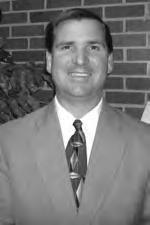
2010Steve McLendon
2012Sara Womack
2014 Carl Hancock
18 August/September 2015

alabreve 19
Itisnottooearlytobethinkingaboutour AMEAConferenceinJanuary,2016.Just remember,youmustjoinNAfME,and youshouldpre-registerifpossible.A healthyorganizationisalwaysconcerned withgrowthanddevelopment,andthe AMEAboardisinterestedingrowingour organization,andforgettingallmusic teachersinAlabamainvolvedin professionaldevelopmentthroughAMEA andNAfME.Youcanhelpincreaseour membershipbycommunicatingthe benefitsofmembershiptoourcolleagues. Whenyouarejoiningorrenewingyour membership,thinkofthosemusicteachers inyourareathatmaynotbeactive members,andsendthemamessage invitingthemtojoin!Youcouldsendan emailwiththeircontactinformationtome atpstegall@mscs.k12.al andIwillinvite them!
Rememberto:Remindyourcolleagues tojoin,includethenewmusicteachers, invitetheinactivemusicteachersandbe involvedasamentortotheyoungmusic teachers
Renewyourmembershipnowat www.nafme.org .MembershipinNAfME isrequiredforparticipationinstateMEA sponsoredeventsliketheAMEA Conference,theElementary DivisionFallConference,AllstateandMusicalPerformance Assessments.
JoiningNAfMEsecuresyour membershipinAMEAandin yourdivision.
Registernowforthe2016 AMEAconferenceonlineat
www.alabamamea.org. Youwillfinditiseasy andwillsaveyoutime andmoney.Reunite
colleaguesfromallover thestateinJanuary.
Rejuvenateyourenergyandrenewyour enthusiasmfortherestoftheschoolyear!
Remindyourcolleaguestojoin, includethenewmusicteachers, invitetheinactivemusicteachers andbeinvolvedasamentortothe youngmusicteachers
Asanewschoolyearbegins,wearegrateful toAMEAforprovidingthisopportunityto shareinformationwithourmusiccolleagues andmusicstudentsacrossthestate.
AlabamaIntercollegiateBand
The2015AlabamaIntercollegiateBandperformedonJanuary23rdattheAlabama MusicEducatorsAssociationIn-service ConferenceinMontgomery.TheAlabama IntercollegiateBandwasdesignedbyAlabamacollege/universitybanddirectorstobe acollaborative,educationalexperience.Ten schoolsparticipatedintheensembleconductedbyCol.JohnBourgeois,Director EmeritusoftheUnitedStatesMarineBand.
atTroyUniversity,wonfirstplaceattheNationalAssociationforTeachersofSinging CompetitioninGreensboro,NorthCarolina inJuly2015.CarolAnneisavocalstudent ofDr.ChristiAmonson,AssistantProfessor ofVoiceatTroyUniversity.
PercussiveArtsSociety EnsembleShowcase
TheTroyUniversityPercussionEnsemble wonthe2015PercussiveArtsSocietyInternationalPercussionEnsembleCompetition, andwillperforma50-minuteshowcaseconcertatthePercussiveArtsSocietyInternationalConventioninSanAntonio,Texasin November.TheTroyUniversityPercussion Ensemblewonthesamecompetitionin 2012.Thepercussionensembleisunderthe directionofDr.AdamBlackstock,Associate ProfessorofPercussionatTroyUniversity.
Up-comingAnnualEvents:
SoutheasternUnitedStatesChoralClinic – Jan.15-16,2016.
ContactDr.DianeOrlofsky
SoutheasternUnitedStatesHSHonor Band/ConductorsClinic – Feb.4-6,2016.
ContactDr.CarlaGallahan
GuitarFestival –Feb.19,2016.
ContactDr.RobertGibson

VocalJazzFestival – Mar.16-17,2016.
ContactDr.DianeOrlofsky
ClarinetDay– Apr.2,2016.
ContactDr.TimPhillips
CarolAnneOsborne,aseniormusicmajor
SoutheasternUnitedStatesMiddle SchoolBandClinic – Dec.3-5,2015.

ContactDr.MarkWalker
AdditionalinformationabouttheJohnM. LongSchoolofMusicmaybefoundat music.troy.eduWeinviteyoutovisitusonlineorinpersonsoon.
20 August/September2015
withfriendsand
NewsandHappeningsfromAlabama’sCollegesandUniversities
CampusConnections...
FirstPlaceAward
TheJohnM.LongSchoolofMusic–TroyUniversity
PatStegall,AMEATreasurer/Registrar
CollegesanduniversitiesareencouragedtosubmitnewsworthymaterialandannouncementsforpublicationinAlaBreve




ALL-STATE JAZZ BAND
Greetings! I hope everyone had a relaxing summer and a great start to the school year. In addition to marching band, fall is the time to help your students prepare for the all-state jazz band auditions. Please check the ABA website for audition requirements and registration information. Students have to perform a recorded audition on CD,which consists of two jazz standards (including some improvisation), an etude, and several scales. Students should be able to improvise with just a few scales, so please don’t let your students get intimidated by the improv component. We will have 3high school bands again this year (Gold, Silver, and Bronze) and 1 middle school band. We had 177students audition for the bands last year, and I would like to see this number grow substantially this year. Please encourage your students to audition for the band.
——Remember to allow enough preparation time to get recordings completed and mailed by November 6, 2015.
ALL-STATE JAZZ CLINICIANS

I am excited to report that we have four outstanding clinicians for the 2016 all-state jazz bands.
Mr. Mike Steinel will be directing the gold jazz band. Mr. Steinel is an associate professor of jazz studies at the University of North Texas where he teaches jazz improvisation and jazz trumpet. He is the author of the Essential Elements Jazz Ensemble Method,which is used as a resource by jazz bands from throughout the United States. He holds degrees from Emporia State University and the University of North Texas.
Dr. Chip Crotts will be directing the silver jazz band. Dr. Crotts, a world-class jazz trumpet player, is the director of jazz studies at the Georgia Institute of Technology in Atlanta, Georgia where he directs the jazz ensemble and assists with the marching band. He has worked with numerous groups (including several top 12 drum and bugle corps) and professional musicians throughout his career. Dr. Crotts holds degrees from East Carolina University, Penn State University and a doctorate from the University of Texas at Austin.
Mr. Bryan Hooten will be directing the bronze jazz band. Mr. Hooten, a graduate of Vestavia Hills High School in Birmingham,is director of bands at Collegiate High School in Richmond, Virginia. Previously on the faculty

of Virginia Commonwealth University, Bryan Hooten taught the Jazz Ensemble II, jazz trombone, and theory. Mr. Hooten is a member of the nationally acclaimed group, No BS Brass Band, and he maintains an active schedule as a professional trombonist in Richmond, Virginia. He holds degrees from the University of Southern Mississippi and Virginia Commonwealth University.
Mr. David Allinder will be directing the middle school jazz band. Mr. Allinderis the band director at Shades Valley High School in Birmingham where his symphonic, marching, and jazz bands have received statewide and national acclaim. Mr. Allinder was previously the band director at Gresham Middle School in Birmingham where he had a tremendously successful program. He is an active bass player throughout the Birmingham area. He holds a bachelors and masters degree from the University of Alabama.
All four of these clinicians are truly top-notch jazz educators, and I am confident they will provide an excellent experience for your students.
Please feel free to contact me if I can be of assistance to you in any way with your jazz programs, and I hope you will encourage your students to audition for the all-state jazz ensembles. I wish everyone a great school year.


ala breve 25
Mark Foster, Jazz Chair
This is How We Do it Here: Establishing a Positive, Successful Culture in Your Music Program
The Dreaded Question
“Are we playing today?” asked a trombone player as he entered the band room. “What do you mean?” answered the band director, “Yes—we are doing what we do everyday, we’re playing.” “Oh, boo”,the student responded, “I thought maybe we could take a break and watch a movie. It’s Friday and we always used to watch movies on Friday’s when Mr. (fill in the blank) was here…” “Ugh”,thought the teacher, “here we go again.” This exchange is likely familiar to many music teachers. It is not that watching the occasional movie is bad;it is that we often do not have enough time as it is to teach all of the standards and curriculum that are required during the time we have with the students. Also, we want them to want to play or sing everyday, right?
A director who recently changed schools told me he had a goal to get his students to the point where they were disappointed when they had to watch a movie. He was new to the school and wanted to know how he would be able to change the thinking of the students—thinking and behavior that had been passed on from class to class for years. I told him that he likely would have to begin the long and arduous process of changing the culture of his program. I explained that to do so would require patience from both him and his students, and be done in small, yet powerful steps.
Culture
One of the definitions of cultureis “the beliefs, customs, arts, etc., of a particular society, group, place, or time; a particular society that has its own beliefs, ways of life, art, etc.; a way of thinking, behaving, or working that exists in a place or organization” (Merriam Webster Online, 2015).Establishing a strong culture in any program, band, chorus, orchestra, or general music, makes it easier for everyone involved to know and understand expectations. Teachers may have to ask themselves, are the ways that we do things in this program helping or hurting our success? We sometimes unknowingly and
blindly teach without a vision of success for our students (or us.) Bob Duke, Professor of Music at the University of Texas at Austin,states that we are to have a vision of our students as successful, accomplished learners. I would add that we should also have a vision of ourselves as successful, accomplished teachers. This vision can also include the culture of our program.
Before one can establish a culture, it is best to identify what the vision actually is for the program. It is at this point whendecisions can be made about the habits likely enabling the maladaptive behavior(s). When all of the behaviors are corrected and your positive culture is in place, what does it look like? Does your new culture include a lot of parent support? Does it include a lot of performances? Having a firm idea of the end result is your vision of your new and improved culture.
As far as behaviors are concerned, you will have to determine what it is you want to change. Do you want your students to enter the room in a certain way? Do you have guidelines for who is and is not allowed in the music room? Do you want your students to think of the music room as a sacred place that is a safe haven for them throughout the school day and beyond?
Teachers often tell me that they want their students to have fun and enjoy the experience in their classroom. I think it would be difficult to find anyone who disagrees. However, what exactly does that mean? Does it mean that your students enjoy the your classbecause they are not being corrected fortheir academic or social behavior? Or are they enjoying the experience because they are thrilled that the one musical passage you have all been working on finally came together beautifully?Which enjoyment do you want them to have? This is why identifying current behaviors is so important. Defining what fun and enjoyment is in your classroom is part of how you change the
by DaLaine Chapman
culture. This is different for everybody which is why it is important to think through what you really want for your program.
Having a routine helps to form a culture. Routine often involves having consistent classroom activities, consistent classroom management principles, and teaching students respect for not just the physical environment but for the program as a whole. It is a constellation of consistent behaviors that interact together to create the culture.
A culture of any program is about just that: the entire program. Not just the marching band, or the top show choir, but about all of the ensembles. It is likely that in programsthat have a strong sense of culture, a high percentage of the students and parents, not just the teacher, have strong allegiances and loyalty toward having success. Perhaps we have heard all too often: “We had a great choral program for many years…then she left…” It has to be about everyone involved in the program for the culture shift to happen and be successful.
Change is Difficult, But a Few Selected Students Can Help
A mentor once told me that changing the culture of any organization is like turning a ship in a harbor. It takes time, tenacity, and a lot of patience. It also takes teamwork. Changing the thinking and behavior of just one person is often difficult, but having to do so with groups of students is very challenging for one person alone. A teacher trying to do so may be better served by having a smaller subset of that group to help in the process.
Older students mentoring younger students help the culture cause tremendously. If a teacher has trained student helpers in how to act and how to mentor other students, mentoring can be a powerful tool in achieving a positive culture. Mentors can be there to show that, yes, everyone practices;
26 August/September 2015
Editor’s Note: This article appears as one of a series written especially for Ala Breve by experts in the field of music education.
yes, everyone obeys the rules; yes, everyone not only gets to rehearsal, but also arrives on time; and yes, we have fun, but we have fun doing the right things. The students respect each other for their similarities and differences. Older students show younger ones how to act by modeling the expected behavior. Often, when younger students see an audience react positively to a well-done musical performance by the older students, the culture of the program starts to change. Former students have told me that they were glad they had older students to look up to and help navigate their first year in the program—they acknowledged that there was a certain comfort in knowing someone was looking out for them.
Respect
The endgame of course is gaining respect for the program, and not just from administration,parents,and the general public, but also from the students themselves. Students who are proud of their music programs typically are a part of programs of excellence. They practice, they work hard, and they reap the benefits of the hard work by becoming excellent musicians. They are proud to wear the jacket associated with the ensemble, and they are happy to have a room on campus where they can go to just ‘hang out.’
I am sure many who are reading this would agree that when we walk into music rooms we have developed a sense of knowing quite quickly the culture of the program. There are often students in the room before and after school. Are the students respectful and helpful? Are they nice to each other? Do they adhere to the guidelines of the school?
Students have to have a healthy respect for the room in which they are making music. It does not matter if it is the band room, choir room, or general music classroom. Students can be taught how to respect their environment. How do they treat the physical room? Is there trash on the floor? Are there instrument parts lying around? Are choral risers unhooked from one another and spread around the room? Are there stacks of books and papers on the piano? Are there broken music stands
everywhere? You might say, well, perhaps that is the job of the parent to instill such values in their own children. Yes, but…we have all had students who act much better in our music room than they do in their own home, or in other teachers’ classrooms. It is no secret that we are often mother, father, sister, or brother to our students,teaching them not only music, but also how to behave in a public place.
Finally, there has to be a strong respect for the music itself: for rehearsing it, for understanding it, and for performing it. After all, producing an exquisite sounding group with your students is likely a large part of why you were hired. It would be equally terrific if the students were well mannered and respectful as well as good musicians.Ultimately, the probability is high that the culture will change in the right direction if it is about the music. Incidentally, the music portion of this article was not placed near the end to signify its place in a successful culture. Remember, all of these points interact with one another on a daily basis toward a successful culture in any program.
You have the good fortune to establish the culture of your choice. So,look around. Are you happy with the culture of your program? Is it self-sustaining where you do not have to tell students every Friday that “yes, we are playing today”? If so, then congratulations! I am sure you enjoy going to schooland reaping the rewards of your
patience and hard work. If not, you are in the perfect position to make lasting changes that will benefit both you and your students.
Culture. [Def. 5]. (n.d.) In Merriam-Webster.com Retrieved January 3, 2015, from http://www.merriamwebster.com/dictionary/culture

DaLaine Chapman is currently an Assistant Professor of Music Education at Florida Atlantic University in Boca Raton. Her research interests include music teacher evaluation and assessment as well as the supervision of student teachers. Dr. Chapman is an active conductor/clinician who has presented at numerous clinics and conferences nationwide. Her professional affiliations include Florida Music Educators Association, Florida Bandmasters Association, Texas Music Educators Association, and the National Association for Music Education. She is also a member, by invitation, of the Omega chapter of Phi Beta Mu, the prestigious International Band Fraternity. She holds Bachelors and Masters Degrees from The Florida State University and a Ph.D. from The University of Texas at Austin.


ala breve 27
Battling Going Through The Motions during Band Rehearsals
As the beginning of the school year excitement starts to fade, band directors and their students across the country find themselves surrounded in routines. Routines for entering and exiting the classroom, setting up and tearing down instruments, and restroom and other administrative procedures to name a few. Some directors also choose to establish rehearsal routines such as delivering announcements either at the beginning or end of class, tuning to the oboe or clarinet, having a student conductor lead warm up exercises, or choosing to warm up together, individually, or both. While establishing and maintaining routines are excellent practice for student and band success (Juchniewicz, Kelly, & Acklin, 2014), predictability in musical routines may cause students not to put concentrated efforts to play at their best, or simply go through the motions. As a result, when students are not putting forth maximum effort, bad habits of poor posture, weak air stream, or general poor technique start to form. Merely going through the motions can be detrimental to the music making and learning process. Band directors now find themselves searching for motivational strategies for the students to play well consistently instead of focusing on instructional strategies that impact the music making and learning process.
Some band directors also fall into a routine that can be unfavorable to the band’s success. Regardless of the level, hearing routine band sounds become problematic for teacher development. When band directors struggle to get students out of routine playing habits, at times they may settle for the present sound. Being trapped with the same sounds can cause teachers to overlookoriginal expectations and the countless instructional techniques to draw those sounds out from their students. The following strategies are for band directors to maintain routines while varying activities within musical routines for ideal outcomes.
1. Long Tones
As teachers, we already know the wonderful musical development long tones provide such as building tone quality, endurance, awareness of pitch, and much more (Juchniewicz, Kelly, & Acklin, 2014). When students are playing their daily long tones, be sure to emphasize fundamental technique between each breath. For example, if the students are sustaining 12
beats each chromatic tone with mm = 60, place four beats of rest between each semitone to ensure quality breaths and most importantly, provide meaningful feedback during the rest time. Reminders could be anything from better posture, deeper breaths, faster air stream, embouchure adjustments, or tapping their toe to the tempo. Routine musical exercises, such as long tones or scales, are typical activities where students tend to go through the motions. Teachers can capitalize on instruction during these routines and reinforce the importance of the activities by being fully involved. The active feedback provided does not always have to be verbal. As the teacher, conduct the students through long tones. Emphasize technique and air speed through conducting gestures. This way the students can focus solely on tone production and you can work on maintaining their focus through a vocabulary of conducting gestures. Being actively present in daily musical routines holds your students to the higher expectations you create with consistency.
2. Air
A large number of bands that I have worked with or adjudicated still show fundamental problems of tone production but tend to focus solely on the music being performed. Often students go through the motions in terms of focusing on tone quality the moment music is placed in front of them. In addition, directors may also feel pressures of upcoming performances or assessments that they too negate foundations in lieu of focusing on notes and rhythms found in the music. Remember, your job is to teach music to band students, not teach the band music to students. Reinforce foundations of air during rehearsal to vary rehearsal routines. Producing characteristic tone quality on band instruments comes first and students need reminders and activities to produce great tone quality. It does not matter how wonderful the piece if the sounds producing the music are not quality. Avoid allowing the students go through the motions when it comes to production of air.
3. Rehearsal
If you find yourself rehearsing the same section of music with the same unprepared students repeatedly, you and your students are probably frustrated with the predictable
By Susana M. Lalama
routine of the rehearsal. The bigger problem is that students tend to shift their attention to anything but playing with great fundamental technique and go through the motions during rehearsal. Vary rehearsal activities. Involve all students in learning the troubled musical sections.
Tonal. For musical problems dealing with note accuracy or intonation, create activities in which all students sing the troubled sections. Uniform singing builds confidence in the weaker musicians, allows more opportunity for repetition with a different approach. Involve all students — which keeps them involved in the learning process and avoids potential behavioral problems, and is ideal for strengthening awareness of pitch (Worthy & Thompson, 2009). For the students without the music in front of them, either transpose a section or have the students learn to play the problematic section by ear (Musco, 2010). For the struggling students, vary the routine by first singing the problem section, then sing while fingering through the section, and finally playthrough the section. Many students and teachers skip the middle step of singing while fingering through the section, which ultimately connects the physical with the aural skills.
Another idea that is helpful with learning and perfecting tonal passages is altering the rhythms before returning to the original. For example, if there are multiple sixteenth note passages that are problematic for your students, isolate five successive sixteenth notes and change the rhythm so that students rehearse two notes as sixteenth notes and the rest as eighth notes (see figure 1). By altering the rhythm, students are able to isolate the difficult connections without becoming bored by repetition. Varying the activities will help break the rehearsal routine while helping the students improve fundamental music skills that go beyond the music.
Rhythm & Articulation. When students are having problems understanding particular rhythms, verbalizing the rhythms is a common strategy. Similar to singing tonal music patterns, chanting rhythmic patterns aloud helps weaker musicians learn from others, builds confidence, and is a way to keep all students involved. However, if the same
28 August/September 2015
Editor’s Note: This article appears as one of a series written especially for Ala Breve by experts in the field of music education.
students continue to struggle with the same rhythms, perhaps varying the activity may do the trick. Have students create words to particular rhythms to help retain the patterns. This way, each student can contribute and avoids going through the motions in a counting system in which they are struggling to understand. Of course, do not forget to count or chant with the metronome. Students often omit this important step of counting or chanting the rhythmic patterns to a steady pulse which explains their struggle in understanding the placement of rhythms.
For passages in which students struggle with articulation, either style or speed, have the students sing. If they can verbalize it, they will be able to articulate it. Many successful band directors use this technique but it only works if the fundamental skills are present (even in singing). Emphasize energy in air speed when the students are singing through rhythmic patterns and styles. Students frequently forget to use fast air stream when they are focused on an articulated problem. Regardless whether band students intentionally go through the motions or not, band students need constant reminders to perform with the quality fundamental technique to ensure strong and consistent musical outcomes.

the foundations of good musicianship. Teaching tonality and structure from the beginning will help students understand how to create shapes. If students learn that every phrase must be shaped from the moment they start playing their instruments perhaps a stronger foundation will be built.
Another way to build musicality for your students is to make your conducting consistently expressive. If your conducting appears to the students as going through the motions, the students will do the same in their practice and performance. Practice and adjust to refine your conducting technique. Student attention to the conductor will improve if there are a variety of gestures. Record yourself during rehearsal and turn down the volume to see the effectiveness of your conducting gestures. Perhaps you may find you have a limited vocabulary, not enough emphasis on style, or just bad habits. You will improve as a conductor, musician, and teacher,and your students will improve as musicians individually and as an ensemble.
5. Practice
holding the students accountable for performance improvements based on the checklists.The moment band directors assume students understand how to practice, frustration and disappointment are soon to follow.
Conclusion
Routines are wonderful for band students but only if the efforts delivered within the routine activity does not affect the integrity of the music performance skills. Students have tendencies to forget fundamental technique when distracted or bored of repetition;hence go through the motions. Keep the students involved by reinforcing fundamental technique through all portions of rehearsal, including home learning. Whether the students are practicing their instruments individually or in a group setting, create a variety of meaningful activities where you can provide feedback for student growth. Going through the motions is not acceptable practice for playing in band, so insist on avoiding it by reinforcing high musical expectations throughout the year.
4. Musicality
Every phrase in music must have a shape. If the musical performance does not have direction or shape, musicality is lost. I have witnessed countless band students play notes and rhythms well but lack musicality. Students have a difficult time creating shapes and end up performing just the notes and rhythms. Perhaps this happens because the students learn the piece without musicality in mind. Teachers must help their students in the learning process by insisting and reinforcing
While all of these above strategies may seem obvious to the skilled musician, students need varying activities with plenty of reminders to avoid playing through the motions. The most challenging part is setting up the band students for home learning success. Ideally, individual studio lessons would help instrumentalists with fundamental problems, but not all students come from families that have the means (or interest) to invest in private lessons. Home learning practice habits need to be taught in a manner where students can have a variety of routine activities for efficient home learning. Most students (when they practice) either play through the music continuously or only play the portions they enjoy (i.e. the part they can play well and that is fun for them)which is not the most efficient use of home learning time. Create a checklist of activities with specifics of what to listen for during student home practice. For example, routine long tones and scales can have daily variations on duration lengths and patterns. When it comes to portions of the music being rehearsed, isolate a particular section and give specific instruction on how to practice at home...and put it in writing!Students will not take practicing at home seriously unless the band director takes it seriously. Be consistent in assigning home learning assignments and
References
Juchniewicz, J., Kelly, S. N., & Acklin, A. I. (2014). Rehearsal characteristics of “superior” band directors. UPDATE: Applications of Research in Music Education, 32, 2, 35-43. 1177/8755123314521221

Musco, A. M. (2010). Playing by ear: Is expert opinion supported by research? Bulletin of the Council for Research in Music Education, 184, (49-64). www.jstor.org.marie.converse.edu/stable/27861482
Worthy, M. D. & Thompson, B. L. (2009). Observation and analysis of expert teaching in beginning band. Bulletin of the Council for Research in Music Education, 180, 29-41. www.jstor.org.marie.converse.edu/stable/40319318
Susana M. Lalama is Assistant Professor of Music Education and conductor of the wind ensemble at Converse College in Spartanburg, South Carolina. She is an active band clinician, adjudicator, consultant, and music education researcher.

ala breve 29
Figure 1
AMEADivision Events 2015 - 2016
Alabama Bandmasters Association
AMEA In-Service Conference/All-State Jazz Band
January 21-23, 2016 - Renaissance Montgomery Hotel at the Convention Center All-State Solo Festival
April 13, 2016 - University of South Alabama
All-State Band Festival
April 14-16, 2016 - Mobile Convention Center Summer In-Service Conference
June 22-23, 2016 - Hampton Inn and Suites, Orange Beach
August 24, 2015
January 30, 2016 Tuscaloosa County HS District Honor Band February 19-20, 2016 University of West Alabama
February 20, 2016
February 25-26, 2016 University of Alabama School of Music
Solo and Ensemble Festival
Solo and Ensemble Festival
District VI All-State Band Unassigned Auditions
All-State Band Auditions
District Honor Band
March 15, 2016 Prattville JHS
April 21, 2016 Tuscaloosa County HS
January 30, 2016 St. James School
January 30, 2016
February 19-20, 2016
Opelika MS
Auburn HS
State MPA
Solo and Ensemble Festival
District VII District Fall Meeting
All-State Band Auditions
State MPA
Solo and Ensemble Festival
Solo and Ensemble Festival
District Spring Meeting
District VIII District Fall Meeting
All-State Band Auditions
State MPA
District Honor Band
District Spring Meeting
Solo and Ensemble Festival
Solo and Ensemble Festival
March 8, 2016
First Baptist Church Montgomery State MPA
March 9-10, 2016
April 28, 2016
August 24, 2015
January 16, 2016
March 9-11, 2016
April 30, 2016
May 7, 2016
May 9, 2016
August 17, 2015
January 9, 2016
March 8- 11, 2016
March 12-13, 2016
March 13, 2016
May 7, 2016
May 14, 2016
Opelika HS
Auburn JHS
Murphy HS
Davidson HS
Baker HS
Fairhope HS
Faith Academy
Daphne HS
TBA
Troy Elementary School
Enterprise HS
Enterprise HS
Enterprise HS
Troy Elementary School
Excel HS
30 August/September 2015 District I District Fall Meeting August 24, 2015 James Clemens HS All-State Band Auditions January 29-30, 2016 Sparkman HS District Honor Band February 12-13, 2016 Austin HS State MPA I March 8-9, 2016 Huntsville HS State MPA II March 10-11, 2016 James Clemens HS Solo and Ensemble Festival April 2, 2016 Priceville HS Solo and Ensemble Festival May 7, 2016 Liberty MS District II District Fall Meeting August 25, 2015 Gadsden City HS All-State Band Auditions January 16, 2016 Albertville HS State MPA February 24-26, 2016 Gadsden City HS District Honor Band March 11-12, 2016 Albertville HS Solo and Ensemble Festival April 18, 2016 Southside HS Solo and Ensemble Festival May 2, 2016 Oxford HS District III District Fall Meeting August 15, 2015 Smith Lake All-State Band Auditions January 30, 2016 Muscle Shoals HS District Honor Band February 19-20, 2016 Wallace State Community College State MPA March 1-3, 2016/March 12, 2016 UNA/Muscle Shoals High School Solo and Ensemble Festival May 7, 2016 UNA District IV District Fall Meeting September 21, 2015 TBA All-State Band Auditions January 30, 2016 TBA District Honor Band February 26-27, 2016 Homewood HS State MPA (High School) March 8-10, 2016 Hewitt-Trussville HS State MPA (Middle School) March 15-17, 2016 Homewood HS District Honor Band February 26-27, 2016 Homewood HS Solo and Ensemble Festival April 19, 2016 Homewood MS Solo and Ensemble Festival May 7, 2016 Bumpus MS District Spring Meeting May 23, 2016 TBA
District V District Fall Meeting
Private Residence, email for details All-State Band Auditions
District
Spring Meeting
State
Private Residence
MPA
October 9, 2015: AMEA Elementary Music Festival, Samford University Tiffany English and Andrea Coleman; Featured Clinicians October 10, 2015: AMEA/ AOSA Fall Joint Workshop, location TBA Tiffany English, workshop clinician November 11-14, 2015:AOSA Professional Development Conference, San Diego, CA January 21-23, 2016: AMEA In-Service Conference; Montgomery, AL All State Audition excerpts posted online.............August 10, 2015 Composition Contest Deadline..........................September 1, 2015 All State Audition Registration Deadline.........September 28, 2015 Auditions must be completed by..........................October 11, 2015 Results Posted online.......................................November 16, 2015 Festival Registration Deadline............................December 1, 2015 All-State Scholarship Application Deadline.......December 1, 2015 All-State Festival...........................................February 11-14, 2016 AOA Music Performance Assessment................April 22-23, 2016
Collegiate
September 27- Collegiate Summit - Location TBA JanuJanuary 21 - 23, 2016 AMEA Conference, Renaissance Montgomery Hotel and Convention Center ala breve 31 Fall Workshop: September 11, 2015, Montgomery, 1st Baptist Church, Advance Registration deadline: September 4 Board meeting @ FBC:September 10 6:00 p.m. All-State Auditions Event Date AreaLocation Registration DateAbsolute Deadline/payment due All-Districts Friday, 11/13CullmanSt. Bernard PrepOctober 2 October16 All-Districts Saturday, 11/14CullmanSt. Bernard PrepOctober 2 October 16 All-Districts Sunday, 11/15FlorenceFlorence HS October 2 October 16 All-Districts Monday, 11/16GadsdenGadsden City HSOctober 2 October 16 All-Districts Tuesday, 11/17GadsdenGadsden City HSOctober 2 October 16 All-Districts Wednesday,11/18Montgomery FBC October 2 October 16 All-Districts Thursday, 11/19Montgomery FBC October 2 October 16 All Districts Friday, 11/20MobileSpring Hill BaptistOctober 2 October 16 Honor Choir Screening Event Date Location Reg. Date Absolute deadline/payment due District I October 29 Austin High School October 1 October 15 District II October 27 Tuscaloosa County HS September 29October 13 District III November 2 Gardendale HS October 5 October 19 District IV November 2 Alexandrea HS October 5 October 19 District V November 17James Clemens HS October 20 November 3 District VI October 28 Montgomery Academy September 30October 14 District VII October 29 UMS-Wright October 1 October 15 OCS/OA/ME Event Date Location Reg. Date Absolute deadline/payment due District I November 5 Florence HS October 8 October 27 District II November 10Tuscaloosa County HS October 13 October 27 District III October 19 Gardendale HS September 21October 5 District IV November 5 Alexandria HS October 8 October 22 District V November 3 Randolph School October 6 October 20 District VI November 4 Tallassee HS October 7 October 21 District VII November 9 U of South AL October 12 October 26 SCPA Event Date Location Reg. Date Absolute deadline/payment due District I February 23 1st Baptist/Decatur January 26 February 9 February 24 UNA January 26 February 9 District II March 30 -31Moody Music Bldg March 2 March 16 District III March 21- 23Gardendale-Mt. Vernon UMCFebruary 22 March 2
IV April 7 Gadsden City HS March 10 March 24
V April 4 – 5 Columbia HS March 7 March 21 District VI March 18 1st Baptist Tallassee February 19 March 4 District VII March 15 U of South AL February 16 March 1 S/E Event Date Location Reg. Date Absolute deadline/payment due District I April 7 UNA March 10 March 24 District II March 30 – 31Moody Music Bldg (with SCPA)March 2 March 16 District III April 9 Gardendale HS March 12 March 26 District IV February 25 Jacksonville State U January 28 February 11 District V February 8 – 9Willowbrook Baptist January 11 January 25 District VI March 18 1st Baptist Tallassee February 19 March 4 District VII Fall - October 22U of South AL September 17October 1 Spring – March 15U of South AL February 16 March 1 State Events Event Date Location Registraton DueAbsolute deadline/check due All-State Show Choir AuditionsOctober 16, 17, 2015Gardendale-Mt. Vernon UMCOctober 2, 2015October 9, 2015 All-State Show Choir FestivalJanuary 20 – 23, 2016AMEA Montgomery December 9, 2015December 23, 2015 Honor Choir Festival January 21-22,2016AMEA Montgomery December 9, 2015December 23, 2015 All-State Auditions November 13-20, 2015 Various locations throughout stateOctober 2, 2015October 16, 2015 All-State Festival March 2 – 5, 2016Samford University January 20, 2016February 3, 2016
Alabama Vocal Association Elementary/General Division
Alabama Orchestra Association AMEA
Division
District
District
Why I Want to be a Music Teacher
by Morgan Green, FAME Scholarship Recipient
Immense relief washed over me as the bell rang, signaling the end of first period. That morning had been a mess. From the stress of being late to the fear of failing my math test because I did not understand the material, I was not having a great day. I knew that if I could persevere until the beginning of my second period choir class, I would be okay. Throughout my three years at Hillcrest Middle School, the choir room remained my safe place. My warm, enthusiastic, talented teacher not only taught me a great deal about music, but she taught me about life through music. Her example has not only convinced me that music education is valuable to every student, but it has also inspired me to pursue a career in music education.
As a recent high school graduate, there are many things about life that I have yet to learn, but one thing I am certain of is that the impact of a strong music education is immeasurable. An example of this impact in my own life occurred when I was in the third grade and was assigned the lead role in a local children’s theatre production. Simultaneously, my mother became very ill and was hospitalized for a few months. I chose to continue rehearsing for the show. While the support I received from friends and family was vital during that time, the escape I had in portraying the character was my greatest therapy. When I went to rehearsal, I was able to become this character and forget about the difficulties of my own life. Through the songs I sang and the words I spoke onstage, I could express the emotions of my character, and ultimately the deepest emotions of myself in a safe, appropriate manner. I am so thankful for the music educators and directors who provided me with that opportunity, and I want to follow in their footsteps. Likewise, I am sure that many other young students going through difficult experiences can benefit from the positive relief that music provides.
In recent years, music has continued to be a wonderful outlet through which I can express myself, but in some cases, music itself has presented me with challenges. During my
junior year of high school, I enrolled in a college-level Music Theory course. It is the most difficult class I have ever attended. Despite the frustrations and struggles, the more I learned of the mechanics of music, the more I understood why I love music so much, and my appreciated for the arts increased. At the end of the year, I earned a passing score on the Advanced Placement Music Theory Exam. This experience gave me the confidence to face new challenges and the certainty that I can excel as a music education student at The University of Mobile.
When I ask myself why I aspire to teach music, I have several reasons. First, music has always been a part of me: utilizing my voice in song is the best way I know to express myself. Although I gain a thrill from performing, I long to make a lasting impact by teaching young hearts to perform and express life with their own unique voices. Additionally, I have seen that life can be difficult at times, and no one is immune to hardship. One of the best ways I know to cope with problems, to healthfully convey one’s emotions, and to escape the concerns of everyday life is through song. Every student should have the opportunity to realize this wonderful ability he or she possesses to handle adversity. Another beautiful, important aspect of music education is its potential to broaden our perspectives about other cultures, history, and the ever-changing world around us.
This past school year I had the opportunity to visit an elementary school several times a week to learn from a general music teacher. (An interesting side note is that this impressive teacher is the same one who made such profound impact on me as my middle school choir director!) One of the lessons I was permitted to help my mentor teach was about the life and culture surrounding Louis Armstrong’s release of “What a Wonderful World.” We discussed the artist’s decision to celebrate all that is good in the world, despite the wrongs he suffered. I thoroughly enjoyed contemplating each phrase of the song and
encouraging the students to embrace its meaning as they performed. In the same concert, this fourth grade class performed a musical about the development of our nation’s Constitution. Their teachers and parents were thrilled to see these children gain an unusual excitement about history as they embodied the lesson in a musical way. One student, an intelligent boy who has autism, played the role of George Washington with passion that would bring tears to your eyes. In this musical, he discovered a venue of creative expression in which he excels. Another young girl had a positive experience when I noticed her creating some movement to one of the choir songs. Her face lit up as we adapted her creativity to be included in that song. Many of the children had speaking parts or vocal solos, and we emphasized to them that each student had a special, important role to play in this concert. There are countless other examples of how this one production benefitted each student, sometimes in similar ways and sometimes in very unique ways. I believe that this experience, if only for a moment, opened their minds a little, educated them about an important time in American history, and brought them joy. It thrills my heart to think that this was the effect of only one concert in one elementary school. Imagine the massive effect of successful music educators everywhere! This experience assured me once again of the importance of music for every child, and I am motivated not only to teach music, but also to advocate for music as a vital part of education, because it is a vital part of life.
I want every child to learn about music, learn about life through music, and love music. The reality is that I alone will never be able to reach every child with music that offers happiness and hope. However, as I make my career in music education, I hope to someday be one drop in the ocean of impactful music educators who change lives every day.
32 August/September 2015
Editor’s Note: AMEA recently awarded the FAME (Future Alabama Music Educator) Scholarship to Morgan Green, a 2015 graduate of Hillcrest High School. Scholarship recipients must have attended the FAME program and plan to major in music education at an Alabama university.


PRE-REGISTRATION FORM
AMEA In-Service Conference
January 21-23, 2016
Renaissance Montgomery Hotel at the Convention Center and Embassy Suites (across the street)
LAST NAME
FIRST NAME _____________________ (for badge)
NAfME ID#
Please enclose a copy of your card.
Home Address: (City)(State) (Zip)
Email:
Primary Phone:
School Name:
Principal Division:(check only one) ABA AVA ELEM AOA HED COLLEGIATE
Other Division/s Affiliation:(check all that apply) ABA AVA ELEM AOA HED COLLEGIATE
Please tell us if you are:
First Year Teachers
Collegiate Members
Clinician Conductor of a performing group at the conferenceRetired Current Members, Clinicians, Conductors
Pre-Registration $85.00 (On-Site Registration $100.00)
Retired Members
Registration Complimentary
Pre-registration $65.00 (On-Site Registration $75.00)
Spouse* or Guest* of AMEA Member Registration $15.00 *may not be a music teacher Name
Pre-Registration $30.00 (On-Site Registration $45.00)
Non-Member Alabama Music Teacher
Pre-Registration $185.00 (On-Site Registration $195.00)
TOTAL AMOUNT PAID $ MAKE CHECKS PAYABLE TO AMEA A fee of $35 will be charged for returned checks No Purchase Orders Accepted. Check or Credit Card Only
To pre-register with a credit card go to www.alabamamea.org through January 8, 2015
Mail form and check by Jan. 7, 2016 to:
AMEA Registration, PO Box 3385, Muscle Shoals, AL 35661
Important: Forms and payment received after Jan. 7 will be held at the registration desk for onsite registration. Do not send forms or payment to the above address after Jan. 7, 2016!
THANK YOU! Your conference packet will be ready at the registration desk in the Renaissance Hotel. Your receipt will be in your packet at the conference.
********************************************************************************************************************************************
Please do not fill in the information below. This is for AMEA bookkeeping ONLY
Personal Check # School Check #
Membership verified and payment receipted by:
Date:
ala breve 35
N Neew w A Addddrreessss! !
It is my honor to serve as AMEA Choral Music Reviewer for the Ala Breve. It is my hope that there will be “something for everyone” in this column and that together, we will explore the incredible richness of choral literature that offers many teaching moments and programming options.
Siúil a Rúin
Michael McGlynn(1964—)
Text: English and Gaelic Mixed Voice Choir, a cappella; mezzosoprano solo

Publisher: www.michaelmcglynn.com
Michael McGlynn, the Artistic Director of ANUNA, offers a wide range of choral settings (many have been performed over the years by ANUNA) on his website and Siúil a Rúin is onesuch example. It is one of the most widely known folk songs in the Irish repertoire. The text dates back to the Glorious Revolution (1688) and the war between England, Ireland, and Scotland. Irish men enlisted to overthrow the rule of the British over Ireland and were called “Wild Geese.” This folk song, in particular, is a lament for a lover who has joined the Wild Geese. In this arrangement, the choir creates a melancholy atmosphere while the soloist(s) sing(s) the traditional melody. Michael shared some of his thoughts with me in a recent conversation: “Our culture in its indigenous form has no polyphony, only the melodic line and I try not to alter the melodic line at all…the priority is the transmission of the text… Siúil is such an appealing story, like many of the songs I set from the tradition. I aim to carry the story forward to a new generation…”
Each verse (sung by the soloist) is in English, but the refrain (harmonized by the choir) always appears in Gaelic. The Gaelic title literally translates to “go/walk, my love.” Michael sets the piece in 12/8 (dotted quarter = 105), which helps to propel the lyric melody and text stress. Sample pdfs and an audio performance of this piece are available on his website in addition to the IPA and audio pronunciation. This piece would serve as a very accessible introduction to traditional Irish music and will leave both your choir and audience wanting more!
Siúil, Siúil, Siúil a Rúin. Siúil go sochair agus siúil go ciúin Siúil go doras agus ealái liom Go, go, go my love
Go quietly and go peacefully Go to the door and fly with me
If you are looking to program a unique pairing, combining Siúil a Rúin with the Parker/Shaw arrangement of Johnny has Gone for a Soldier works well (Alfred). Similarly constructed (soprano solo, SATB), Johnny Has Gone for a Soldier is most likely an American adaptation of Siúil a Rúin. The text is known by other names (Buttermilk Hill and Shule Agra), and each one has slight text variations. This American adaptation became popular during the American Revolutionary War and features a woman’s lament for a soldier going off to war.
The Nightingale (the first of Two Colonial Folksongs) arr. Dan Forrest SATB, with piano four-hands and optional violin Hinshaw Music
I was pleased to see Dan Forrest’s The Nightingale in a reading packet at the ALACDA summer conference. Nightingale is an American folk song that, like many, is a variant of a European folk song. This piece is a derivative of the English song “the Bold Grenadier”. The haunting tune, based on the pentatonic scale, can be found in Sharp and Karpeles’ “80 Appalachian Folks Songs” and the text dates back to 17th century England. This particular arrangement was commissioned by the Williamsburg Choral Guild and is part of an on-going project of Forrest to set pieces from every region of the United States. The lilting folk - tune is passed between women and men as the story is told about young love and the imminent departure of a soldier to war. The harmonically –rich climax (“the tune that he played caused the valleys to ring…”) is guaranteed to move singer and audience alike. Nightingale is rich in programming possibilities and serves to introduce students to an example of our country’s rich folk tradition.
Batter My Heart, Three-Personed God
Richard Nance
Text- Holy Sonnet 14, John Donne (15721631) SATB, a cappella Colla Voce Music (Series Editor, Jo-Michael Scheibe)
When I heard this piece performed at the National ACDA Conference, Salt Lake City (February 2015) the very first phrase (“Batter my Heart, Three-Personed God”) quite
literally took my breath away. Richard Nance has taken a provocative and personal text from John Donne and masterfully set it, giving careful attention to its power while exploring the imagery.
The early years of John Donne (like St. Augustine) were filled with wine, women and debauchery; his subsequent journey of repentance and regeneration led him to become a cleric and metaphysical poet in his later years. According to Frederick Rut, the poet Donne explored themes of mortality, divine judgment, divine love, penance, and personal anxieties. Here Donne shows the “paradox of regeneration, asking God to batter his heart in order to mend it” (Entangled Voices: Genre and the Religious Construction of the Self, Oxford University Press, p. 41).
The plea to “batter my heart, three-personed God” is set with alternating meters, both at the beginning and when this plea returns at the end of the song. I appreciate Nance’s care with setting the evocative text and his musical reflection of Donne’s inner turmoil and regret through both key changes (five total for the piece), dynamic and textural shifts, and wellplaced but sparing use of split voicing (SSATTBB). I particularly think Nance’s use of rests (after words like “knock”, “breathe”, “break”, “blow” is another tool to get the listener to pay attention to the power of the regenerative journey and his alternation between homophony (such as in the “divorce me” and “ravish me” sections) and the linear treatment of the plea “take me to You, imprison me” is terrific word painting treatment. This piece would work well for any advanced choir (originally commissioned by the Coral Gables Congregational Church Chancel Choir and Dr. Schiebe).
Dr. Diane Orlofsky is Professor of Music and Director of Choirs at Troy University, where she oversees the choral program and teaches undergraduate and graduate classes in music education. She is the conductor of the Troy University Concert Chorale and the Director of the Troy University vocal jazz ensemble, frequency.

36 August/September 2015
Choral
Reviews
Dr. Diane Orlofsky
AMEA Industry/Institutional Membership

AMEA recently launched an Industry/Institutional membership drive and would like to express appreciation to the following partners who have joined AMEA in our efforts to promote music education in Alabama. Please support these industry/institutional members who support you as music educators!
Art’s Music Shop, Inc. 3030 East Blvd. Montgomery, AL 36116 www.artsmusicshop.com

Eastman Music Company 2158 Pamona Blvd Pomona, CA 91768 www.eastmanmusiccompany.com

Group Travel Network, Inc. 410 N. Dillard St.- Suite 104 Winter Garden, FL 34787 www.grouptravelnetwork.com


John M. Long School of Music Troy, AL 36082 www.music.troy.edu
Madison Band Supply 1604 Hughes Rd Suite B Madison, AL 35758



Huntingdon College Bands 1500 E. Fairview Ave. Montgomery, AL 36106 www.huntingdon.edu/bands

J W Pepper & Son 9053 Riverside Parkway Lithia Springs, GA 30122 www.jwpepper.com
Marchmaster, Inc. P.O. Box 73379 Newnan, GA 30271 www.marchmaster.com

OrlandoFest 7081 Grand National Drive, Suite 111 Orlando, FL 32819 www.orlandofest.com

Sunburst Indian River Citrus 4960 Meadow Brook Rd Birmingham, AL 35242 www.sunburstplus.com.

The University of Alabama Bands 211 Moody Music Building Tuscaloosa, AL 35487 www.bands.ua.edu
UAH Department of Music 301 Sparkman Drive Huntsville, AL 35899 www.uah.edu/music
QuaverMusic.com 1706 Grand Avenue Nashville, TN 37212 www.quavermusic.com
Super Holiday Tours 116 Gatlin Ave. Orlando, FL 32806 www.superholiday.com

Thomas Tours, Inc. 2405 12th Ave. South Nashville, TN 37204 www.thomastoursinc.com

University of Alabama School of Music Box 870368 Tuscaloosa, AL 35487 www.music.ua.edu
UNA Department of Music & Theatre UNA Box 5040 Florence, AL 35632-0001 www.una.edu/music-theatre
University of South Alabama LPAC 1072, 5751 USA Drive, S Mobile, AL 36688 www.southalabama.edu/music



ala breve 37
When Helping Hurts: Developmentally Appropriate Teacher Mentoring
By Michael A. Raiber, PHD
Although we in music teacher education work diligently to prepare young music educators during their preservice education,we must also recognize that “most of the learning to teach music occurs in the first years” (Conway, 2010, p. 268). During this time, many young music educators seek the advice of mentors. These mentoring relationships are sometimes formal, such as school district or state sponsored programs that pair entry-level music educators with more experienced teachers. Other mentoring relationships are informal and include more spontaneous meetings like those with a colleague at a conference or convention. No matter what type of relationship, mentors can have a substantial influence on young music teachers who value mentor’s insights and expertise (Conway, 2010).
Research suggests, however, that all mentoring is not created equal (Drafall, 1991; Glickman, 1985; Glickman, Gordan & Ross-Gordon, 1995). Before providing feedback or advice, effective mentors consider the developmental level of the educator they are intending to help. These mentors use this information to ‘package’ the feedback they are providing in ways that will be understood by the mentee. This research suggests when mentors fail to match their supervisory approach with a teacher’s developmental level, intended help is often misunderstood and/or ignored.
Music Teacher Development
A number of approaches have been used to investigate teacher development. However, a ‘teacher concerns’ model (Fuller & Bown, 1975) has attracted significant attention in recent music education research on this subject (Killian, Dye & Wayman, 2013; Miksza & Berg, 2013; Powell, 2014). This model suggests that development is reflected by shifts in teacher concerns. These concerns are defined by the elements that garner a teacher’s primary attention or their most pressing psychological need at any given moment. Fuller and Bown classified these concerns into three levels of teacher development, a) selfor survival concerns, b) teaching or task concerns, and c) student-learning or studentimpact concerns. While Fuller and Bown
provide clear definitions and lists of characteristics for each level, they also recognize teachers will most often share concerns on multiple levels. They additionally note context can have significant impact on teachers’ concerns. In a new context or setting, young teacherstend to revert to task concerns or self-concerns even if they were previously operating at student-learning concerns levels in more familiar contexts. It is, therefore, the preponderance of concerns shared by the teacher that will help mentors focus their feedback.
Self-concerns are characterized by a teacher’s need to establish his or her sense of self as a teacher rather than a student. These teachers often have concerns about personal adequacy or being ‘cut out’ to teach. They are easily influenced by their perceptions of student acceptance and external evaluations concerning their teaching performance. When talking with teachers operating at this developmental level, theircomments often begin with “I.” Common statements might include, “I hope the students like me” or “I don’t want to be the mean teacher.”
Those functioning at a task concerns level focus on mastery of teaching techniques and the day-to-day work of teaching. These music educators are most concerned with issues like planning lessons or rehearsals, mastering materials, and applying teaching strategies. These teachers will share thoughts like, “I am concerned that I talk too much in rehearsal” or “I need to know more about grade 2 repertoire.” These teachers are often very lesson plan oriented. If their plan contains several steps of instruction, they will follow those steps without regard to student needs. The goal is to present or teach the plan.
Music educators who are primarily concerned with student learning will share comments and questions like, “I am having trouble balancing individual student needs within my classroom”,or “How do I help my more advanced performers stay engaged while I provide more remedial instruction to the students who need it?” These teachers are most concerned with student achievement,
student engagement, motivation for learning, and the personal well-being of their students. One will find these teachers ‘come off their plans’ when it is necessary to meet the needs of the students in the classroom. While they do not lose sight of desired learning outcomes, they are willing to arrive at those outcomes in various ways and will allow the learner to at least partially define the means and methods to get there.
Developmental Supervision
Glickman (1985) developed a supervisory model that accounts for teacher development. The goal of this modelis to match the supervisory approach with the teacher developmental level so the mentored teacher both understands the information being provided and uses the information to further his or her development. Glickman’s model was intended to facilitate in-service teacher development, but Drafall (1991) successfully applied the model to facilitate pre-service music teacher development as well. Glickman’s model places supervisory behaviors in three categories, a) directive behaviors, b) collaborative behaviors, and c) non-directive behaviors.
Using directive supervisory behaviors, the mentor will choose the goals for the teacher and direct the teacher to implement specific actions. The mentor may ask for and consider teacher feedback but remains the source of information while offering alternatives from which the teacher may choose a course of action. This supervisory approach is appropriate to use when time is short and concrete actions need to be taken or when the teacher lacks needed knowledge, skills, or experience necessary to affect change. To be effective, the teacher must view the mentor as a credible source and the mentor must be willing to take responsibility for the actions of the teacher. This suggests that effective mentors who find a directive approach necessary develop relationships with those they supervise. They work with these teachers over time and provide additional feedback when needed.
38 August/September 2015
Mentors who choose to use a collaborative
Editor’s Note: This article appears as one of a series written especially for Ala Breve by experts in the field of music education.
approach may do so for several reasons. They may determine the teacher being advised is functioning at a moderate level. The teacher demonstrates the ability to make effective decisions, but may not have the confidence to implement actions with authority. Additionally or alternatively, the mentor may determine the teacher’s knowledge base is similar to his or her own and both mentor and teacher are invested in the decision being considered. Often, when a collaborative approach is used, both the mentor and the teacher are equally committed to solving the problem. A collaborative approach requires the mentor and teacher openly discuss possible solutions and reach an agreed-upon decision regarding how to improve instruction that is genuinely acceptable with both parties. As a result the teacher is affirmed in his or her ideas about teaching.
When an effective mentor determines the teacher is functioning at a high level and possesses most of the knowledge and expertise necessary to be effective, he or she will often choose to use a non-directive supervisory approach. In doing so the mentor will start by asking open-ended questions to guide the teacher’s thinking, but decisionmaking and implementation remains the sole responsibility of the teacher. The mentor will not interject ideas, but only clarify the thoughts or ideas provided by the teacher. The goal of this approach is to assist the educator in thinking through alternatives that help the teacher reach his or her own conclusions.
Developmentally Appropriate Mentoring
Matching a teacher’s developmental level (Fuller & Bown, 1975) with a specific supervisory approach (Glickman, 1985) is likely to provide the most effective mentoring outcomes for all involved. This suggests a directive approach would be most effective for teachers operating at a self-concerns level. At this point, mentor feedback should not only provide solutions to immediate issues, but also help direct the teacher’s concerns away from self and more toward teaching. As teaching concerns become the educator’s primary focus, mentoring should change to a more collaborative approach. As the mentor and teacher work together to find answers to the issues at hand, effective mentors steer conversations away from teaching concerns and focus on student learning. In effect,
mentors model this concern for the teacher. As the teacher’s concerns become centered on student learning, the effective mentor moves to a non-directive approach, coaching the teacher as he or she makes decisions for themselves. In general, as teachers become increasingly aware of their impact, they are provided greater autonomy.
A note of caution is necessary at this point, because the process outlined above appears to suggest that effective mentoring is very systematic with teachers consistently moving from one concerns level to the next. Fuller and Bown note, however, that teacher development is not linear, but fluid,as teacher concerns tend to revolve rather than evolve depending upon context. Therefore, the mentoring approach must be fluid as well. Even if the mentoring approach has been non-directive, it is not uncommon to find it necessary to provide a directive approach when teachers are in new environments or have new information to apply to their teaching. Additionally, a teacher may be at different stages of development in different environments. For example, a young band director’s concerns may be focused on student learning in the concert ensemble, but due to lack of experience, he or she is self-concerned when working with a jazz ensemble. Effective mentors will match their supervisory approach to the developmental level demonstrated by the teacher at any given time. Mentors have had and will continue to have a tremendous effect on young music educators. When mentors effectively assess a teacher’s developmental level and match their supervisory approach to that assessment, they are likely to find their feedback and advice to be increasingly effective. The outcome will benefit many, but most importantly, students in music classrooms will be the primary beneficiaries of effective teacher mentoring.
References
Conway, C. (2010). Issues facing music teacher education in the 21st century: Developing leaders in the field. In H. S. Abeles & L. A. Custodero (Eds.), Critical issues in music education: Contemporary theory and practice, (pp. 259-275). New York: Oxford University Press.
Drafall, I. E. (1991). The use of developmental
clinical supervision with student teachers in secondary choral music: Two case studies. Available from ProQuest Dissertations and Theses database. (UMI No. 9210787)
Fuller, F. F. & Bown, O. H. (1975). Becoming a teacher. In K. Ryan (Ed.), Teacher education 74th yearbook of the National Society for the Study of Education, part II (pp. 25-52). Chicago: University of Chicago Press.
Glickman, C. D. (1985). Supervision of instruction: A developmental approach. Boston: Allyn & Bacon.
Glickman, C. D., Gordon, S. P. & RossGordon, J. M. (1995). Supervision of instruction: A developmental approach (3rd ed.). Boston: Allyn & Bacon.
Killian, J. N., Dye, K. G. & Wayman, J. B. (2013). Music student teachers: Prestudent teaching concerns and post-student teaching perceptions over a 5-year period. Journal of Research in Music Education, 61(1), 6369.
Miksza, P. & Berg, M. (2013). A longitudinal study of preservice music teacher development: Application and advancement of the Fuller and Bown teacher concerns model. Journal of Research in Music Education, 61(1), 44-62.

Powell, S. (2014). Examining preservice music teacher concerns in peer and field teaching settings. Journal of Research in Music Education, 61(4), 361-378
Dr. Michael Raiber is a Professor of Music and holds the Busey Chair in Music Education at Oklahoma City University. .
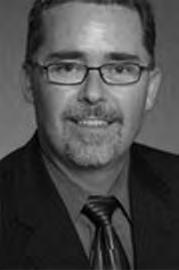
ala breve 39
FAME
Future Alabama Music Educators
Open to High School Juniors and Seniors
Thursday, January 21, 2016 9:00 A.M. - 4:00 P.M. Renaissance Montgomery Hotel at the Convention Center
Application and $20 registration fee are due postmarked no later than January 8, 2016
Student_____________________________________________________________ Grade ____________________
Nominating Teacher ____________________________________________ NAfME # _________________________
School Name ____________________________________________________________________________________
School Address __________________________________________________________________________________
Teacher Phone ________________________________ Teacher Email ______________________________________
This student participates in (circle all that apply): Band Chorus Orchestra
Publicity Waiver
I give AMEA permission to take photos of FAME attendees and use the photos for publicity purposes. By this authorization, I understand and agree that no participant shall receive remuneration and that all rights, title and interest to the photos and use of them belongs to AMEA.
Signature of Student
Enclose $20 Registration Fee
Make checks payable to AMEA
Signature of Parent if Student is under 18
The FAME program includes many important topics for students considering a career as a music educator. This year’s program features Dr. Tim Lautzenheiser and a performance by the Boston Brass.
NEW! AMEA provides a $1000 scholarship opportunity to a FAME participant who plans to major in music education at an Alabama college or university. Visit www.alabamamea.org for details.
Lunch will be provided by AMEA
Mail this application, along with the $20 registration fee, to:
Sara Womack, AMEA Past President
2130 Banberry Drive Hoover, AL 35244
Postmark Deadline: January 8, 2016
40 August/September 2015




PRSRT STD US POSTAGE PAID Dothan, AL 36303 Permit No. 623








































































































































